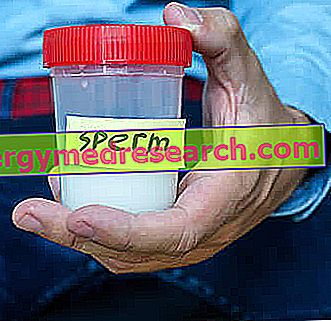Definition
Late porphyria is a metabolic disease due to a defect in one of the enzymes involved in the biosynthesis of the haem. This condition involves characteristic changes in the skin, limited to the regions exposed to the sun (photodermatosis), and liver problems.
Late cutaneous porphyria is caused, in particular, by mutations of the uroporphyrinogen decarboxylase (UPGD) gene. In about 80% of patients, responsible aberration is sporadic (porphyria cutanea tarda type 1), while in the remaining 20% of cases the origin is hereditary (familial form or porphyria cutanea tarda of type 2).
Late porphyria generally occurs around 30-40 years of age and is almost never found in childhood.
In heterozygous subjects, the 50% reduction in UPGD activity is not sufficient to cause the clinical manifestations of porphyria cutanea tarda, therefore other factors must intervene. Among these, iron has a central role, as it inhibits UPGD in the liver; therefore, a concomitant hemochromatosis represents an important element of risk.
Other situations that may further compromise the enzymatic activity and favor the phototoxic reaction in the late porphyria include alcohol ingestion and chronic viral infections (such as hepatitis C). Drugs, on the other hand, are not triggers, with the exception of iron and estrogens.
Porphyria cutanea tarda is the most common of all porphyrias.
Most common symptoms and signs *
- Anemia
- Anorexia
- Asthenia
- Increased transaminases
- bubbles
- Conjunctivitis
- Skin discoloration
- Pain in the upper part of the abdomen
- Edema
- Hepatitis
- Hepatomegaly
- Erythema
- Skin erosion
- Fotofobia
- Abdominal swelling
- hypertrichosis
- Eyes reddened
- Paresthesia
- Dry skin
- Weight loss
- itch
- Skin Ulcers
- Dark urine
- blisters
Further indications
The characteristic signs of this disease are skin fragility (the skin is therefore vulnerable to minimal trauma) and photosensitivity, which causes chronic formation of blisters and bullous eruptions in areas exposed to sunlight (such as face, arms, neck and back of hands).

Cutaneous signs of Porphyria Cutanea Tarda. From the site: www.porphyria-patients.uct.ac.za
The ulcers and erosions that follow can develop secondary infections; these heal slowly, leaving crusts, cysts and atrophic scars. On areas exposed to the sun, the skin reaction is subtle and, often, subjects with porphyria cutanea tarda cannot associate exposure to sunlight with the onset of symptoms. Furthermore, photosensitivity can occur with erythema, edema or itching.
In the late porphyria, hyperemic conjunctivitis may also develop, while other mucosal sites are not affected. Furthermore, areas of hypo- or hyperpigmentation can develop, as can hypertrichosis (especially facial) and pseudosclerodermoid alterations (eg hardening and thickening of the skin).
In the porphyria cutanea tarda, pathologies affecting the liver are frequent. Liver damage may be due in part to the accumulation of porphyrins, chronic hepatitis C virus infection, concomitant hemosiderosis or excessive alcohol intake. Possible complications are steatosis, cirrhosis and hepatocellular carcinoma.
The diagnosis is based on the urinary, blood and fecal dosage of porphyrins and their precursors. Furthermore, it is possible to carry out genetic analysis, researching the mutations responsible for the disease.
Late cut porphyria can be treated with two different therapeutic strategies: reduction of iron deposits in the body with phlebotomy (usually, 5-6 sessions are required) and porphyrin excretion is increased by the administration of chloroquine in low doses . When complete remission is achieved, treatment is discontinued.
To prevent skin manifestations, patients should avoid sun exposure; hats and clothes protect as well as sunscreens with zinc or titanium oxide. Alcohol intake should be avoided permanently, while estrogen therapy can usually be resumed after the disease has been remitted.


